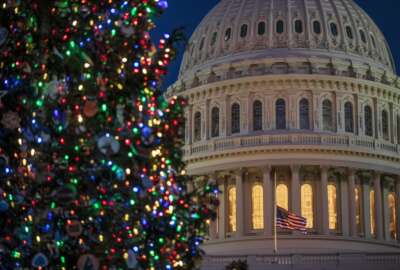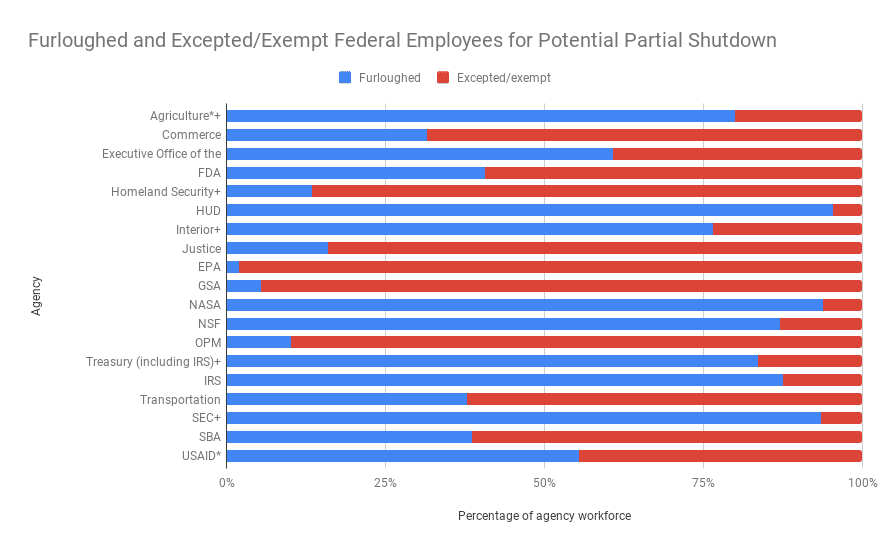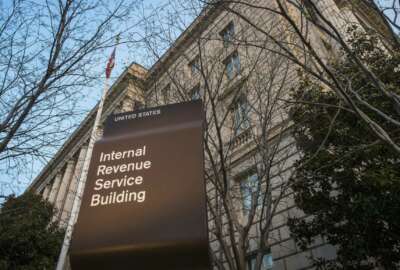

The Office of Management and Budget has made a partial government shutdown official. Agencies have been instructed to execute plans to "begin an orderly shutdown." ...
UPDATED: 10:00 p.m., Friday, Dec. 21, 2018
The Office of Management and Budget told federal agencies to begin executing a partial government shutdown after the House and Senate adjourned Friday evening without having achieved a spending agreement with the White House.
Agencies that aren’t covered by full-year 2019 appropriations should begin to execute plans for an “orderly shutdown,” OMB Director Mick Mulvaney wrote in a memo Friday night.
“Although we are hopeful that this lapse in appropriations will be of short duration, employees should report to work for their next regularly scheduled tour of duty to undertake orderly shutdown activities,” Mulvaney said. “We will issue another memorandum reopening government functions once the president has signed a bill providing for appropriations. Agencies should continue to closely monitor developments, and OMB will provide further guidance as appropriate. We greatly appreciate your cooperation and the work you and your agencies do on behalf of the American people.”
House and Senate leadership continued negotiations late into Friday evening. They have agreed to set aside procedural votes if and when they do reach a deal to fund all of government. Congressional leaders said they wouldn’t return for votes until a final agreement had been reached between both chambers and President Donald Trump.
“We’re not voting on anything else on this chamber until a global agreement has been reached between the president and our leaders,” Sen. Bob Corker (R-Pa.) said earlier on Friday evening. “What this does, I think, is push this ahead to a negotiation that yields a result and does the best we can to keep from shutting down government, or if it does shut down, shut it down only very briefly.”
But the negotiations remained at an impasse several hours later. Both the House and Senate are scheduled to meet again Saturday at noon.
And for large swathes of the federal workforce, it’s still possible that a deal will be reached before their next scheduled workday. Considering that the shutdown began at the start of a four-day holiday weekend, most employees who work Monday-Friday schedules won’t be impacted as long as lawmakers and the White House agree on the terms of a continuing resolution before midnight on Christmas Day.
If no deal is reached by then, workers who haven’t been exempted from a shutdown furlough would return for a half-day of work on Wednesday to handle “shutdown activities” before going back home again.
Federal employees can find more information about their pay, holiday time and leave during a partial shutdown here.
The Senate agreed via unanimous consent to grant furloughed federal employees back pay for the full duration of any partial shutdown, after Sens. Chris Van Hollen (D-Md.) and Ben Cardin (D-Md.) discussed the Federal Employee Retroactive Pay Fairness Act on the Senate floor on Friday evening.
The bill has a House companion, which Reps. Don Beyer (D-Va.) and Rob Wittman (R-Va.) introduced on Thursday. Cardin and Van Hollen encouraged the House to take up the retroactive pay bill quickly, but it had not done so before it adjourned on Friday.
“No government employee should end up having to bear the burden of a government shutdown that has nothing to do with them, and it’s not their fault,” Van Hollen said.
Federal employee groups expressed their disappointment with Friday night’s outcome.
The Federal Managers Association “is demoralized that Congress and the administration were unable to come together and reach a deal to avert a government shutdown,” the group said in a statement late Friday. “It is particularly abhorrent for federal employees to be facing a shutdown so close to the holidays.”
Not all agencies are impacted by a partial shutdown. Five of the government’s 12 annual appropriations bills for 2019 have already been enacted.
The Department of Veterans Affairs reminded the public that it has full-year funding for 2019 and won’t be impacted by a partial shutdown. The Defense Department is also covered with full-year appropriations.
At the Department of Health and Human Services, nearly 60 percent of the workforce will be unaffected. But the remaining 40 percent are funded through the Agriculture and Interior appropriations bills, two of the seven annual spending measures that are still unsettled.
Altogether, the partial shutdown impacts more than 800,000 federal employees, including at least 420,000 employees who may work without immediate pay.
“The holidays just bottomed out for a half-million of America’s public servants and their families,” Randy Erwin, president of the National Federation of Federal Employees, said in a statement. “If the shutdown continues for any length of time, January is going to be a tough month for these middle-class families as they struggle to pay mortgages, credit cards, child care and other life expenses.”
Federal retirees should continue to receive their annuities on time. A significant share of the operations of the Office of Personnel Management, including the office that processes retirement benefits, is funded through sources other than appropriations. The annuities themselves are also paid from trust funds that do not depend on annual spending bills. The same is true of military pensions.
The Commerce Department would have more excepted employees during this potential shutdown than others in recent memory. Roughly 24,682 Census Bureau employees, most of whom will be eventually be involved in the decennial count, will be excepted this time if parts of government close. During the last shutdown in January 2018, just 6,718 employees were excepted at the Commerce Department.
Nearly all of the Environmental Protection Agency will remain open, at least for the time being. EPA announced it will apply unused carryover funding, as well as multiple and no-year appropriations, to avoid a few days of a partial shutdown.
Much of the Department of Homeland Security will stay up and running. The vast majority of employees at the Transportation Security Agency, Immigration and Customs Enforcement and Customs and Border Protection are “excepted,” working without pay until appropriations come through.
These numbers are approximate. Not every agency has updated its contingency plan in 2018, and some departments haven’t provided an estimate for every subcomponent.

*For some agencies, the number of furloughed employees changes depending on the length of the government shutdown.
+ Agencies who haven’t updated their contingency plans in 2018.
The IRS would take a big hit during a partial shutdown, with just nearly 10,000 excepted. About 88 percent of the IRS workforce would stay home, forcing taxpayers to endure longer wait times on the agency’s customer service phone lines.
A partial shutdown could also force the IRS to delay the start of the 2019 filing season, and the Treasury Inspector General on Tax Administration (TIGTA) already expressed those concerns in September. In December 2013, the IRS delayed the start of the 2014 tax filing season following a 16-day government shutdown in October.
Copyright © 2025 Federal News Network. All rights reserved. This website is not intended for users located within the European Economic Area.
Nicole Ogrysko is a reporter for Federal News Network focusing on the federal workforce and federal pay and benefits.
Follow @nogryskoWFED


